Assessing body temperature is a key step in evaluating a patient’s physical condition and detecting potential illness. It reflects the balance between heat production and heat loss in the body, regulated by the hypothalamus. Accurate temperature assessment can aid in detecting infection, inflammation, or other underlying conditions. Different measurement sites and devices provide varying levels of accuracy and are chosen based on the patient’s condition. This guide will help you understand the principles, methods, and best practices for assessing body temperature effectively.
What is Body Temperature?
Body temperature is defined as the balance between heat produced in the body and heat lost from the body. It reflects the thermal state of the deep tissues (core temperature) and the superficial tissues (surface temperature).
Core temperature (e.g., in abdominal/chest cavity) remains relatively constant near ~37 °C (98.6 °F), while surface temperature (skin, subcutaneous tissue, fat) fluctuates in response to the environment. Maintaining a stable core temperature is vital because most enzymatic and cellular processes function optimally within a narrow temperature range.
Heat production (from metabolism, muscle activity, etc.) and heat loss (via skin and lungs) are normally in equilibrium, which keeps core temperature within the normal range of about 36.5–37.5 °C (97.7–99.5 °F). The body’s thermoregulatory center in the hypothalamus acts as a thermostat, activating mechanisms like sweating, vasodilation, shivering, and vasoconstriction to correct temperature deviations and preserve homeostasis.
Purpose of Body Temperature Monitoring
Body temperature is a vital sign that reflects the body’s ability to regulate heat and maintain internal balance. Monitoring provides important clinical information about a person’s health status and response to medical interventions.
1. Detect Fever or Hypothermia
Body temperature is a critical vital sign that helps identify abnormal thermal states. A fever (pyrexia) may indicate infection, inflammation, or other systemic conditions, while hypothermia may suggest environmental exposure, shock, or metabolic dysfunction. Early detection enables timely intervention to prevent complications.
2. Monitor Response to Treatment
Tracking body temperature helps evaluate how well a patient is responding to treatments, such as antibiotics, antipyretics, or warming/cooling therapies. For instance, a decreasing fever may signal effective infection control, while persistent abnormal temperatures might indicate treatment failure or worsening illness.
3. Establish Baseline Data
Knowing a patient’s normal body temperature provides a reference point for identifying deviations. Since normal temperature can vary between individuals, baseline data help clinicians recognize subtle yet significant changes that might indicate an emerging health issue.
Normal Temperature Ranges
Normal body temperature can vary slightly from person to person and depends on the measurement site and age. In healthy adults, the average oral temperature is about 37 °C (98.6 °F), but a normal range is typically 36.5–37.5 °C (97.7–99.5 °F).
The body’s temperature is lowest in the early morning and highest in the late afternoon due to circadian rhythms (often a ~1 °C difference). It’s important to distinguish core (internal) temperature from surface readings: methods like rectal and tympanic closely reflect core temperature and tend to run slightly higher, whereas axillary or skin measurements read slightly lower. The following tables summarize normal temperature ranges by age and by measurement site.
Normal Temperature by Age Group
Different age groups have varying baseline temperatures and susceptibilities: infants and young children tend to have less stable temperature regulation, while older adults often have a lower baseline temperature due to reduced metabolic rate and circulation. The table below shows typical normal temperature values for various age groups and common measurement sites:
Normal Body Temperature by Age (approximate average values)
| Age Group | Approx. Normal Temperature (°C) | Approx. Normal Temperature (°F) | Typical Site* |
|---|---|---|---|
| Newborn (0–1 mo) | ~36.8 °C | 98.2 °F | Axillary (underarm) |
| Infant (1–12 mo) | ~37.5–37.7 °C | ~99.5 °F | Rectal (core) |
| Child (6–8 yrs) | ~37.0 °C | 98.6 °F | Oral/Tympanic |
| Adolescent (10–18) | ~37.0 °C | 98.6 °F | Oral |
| Adult (19–64) | ~37.0 °C | 98.6 °F | Oral |
| Older Adult (65+) | ~36.0–36.5 °C | 96.8–97.7 °F | Oral |
Source: Adapted from standard reference ranges for vital signs. “Typical site” refers to the most commonly used measurement location for each specific population group.
In general, newborns and infants have a higher core temperature if measured rectally (~37.5 °C) but lose heat easily from the surface, so axillary readings may be lower. In childhood and adulthood, normal oral temperature is around 37 °C. Older adults often have a slightly lower baseline (around 36 °C or 96.8 °F), so an elderly person with a “normal” reading of 37 °C might actually have a mild fever relative to their usual state. Always compare with the patient’s baseline when known.
Comparison of Temperature Measurement Sites
The measured temperature will differ depending on the anatomical site, due to local blood flow and exposure to the environment. Core measurements (such as rectal, tympanic membrane, or temporal artery) are generally higher, whereas surface measurements (oral and especially axillary) tend to be lower. The table below outlines the typical differences:
Normal Temperature Ranges by Site
| Site (Method) | Normal Range (°C) | Normal Range (°F) | Characteristics & Notes |
|---|---|---|---|
| Rectal (Core) | 36.6 – 37.9 °C | 97.9 – 100.2 °F | Highest of common sites—considered very accurate core temperature. Typically ~0.3–0.6 °C higher than oral. |
| Tympanic (Ear) | 35.8 – 37.9 °C | 96.4 – 100.2 °F | Baseline reference site. The sublingual pocket has a rich blood supply from the carotid arteries. Mouth breathing or recent intake can affect reading. |
| Oral (Sublingual) | 35.5 – 37.5 °C | 95.9 – 99.5 °F | Baseline reference site. The sublingual pocket has rich blood supply from the carotid arteries. Mouth breathing or recent intake can affect reading. |
| Axillary (Armpit) | 36.5 – 37.5 °C | 97.8 – 99.5 °F | Temporal scanner infrared reading over the forehead. Quick and noninvasive. Often similar to oral or slightly lower (around 0.5 °C lower than core). Sweat on the forehead or external cold can cause lower readings. |
| Temporal Artery (Forehead) | ~36.0 – 37.5 °C (approx) | ~96.8 – 99.5 °F (approx) | Convenient surface measure, especially for infants. Typically ~0.5 °C lower than oral due to heat loss at the skin. Least reliable if a precise core value needed. |
Ranges above are approximate for afebrile individuals. Minor variations exist between sources; values shown compiled from.
Rectal and tympanic temperatures run about 0.3–0.6 °C higher than oral readings, while axillary and temporal readings run about 0.5 °C lower than oral. For example, an oral temperature of 37.0 °C might correspond to ~37.5 °C rectally and ~36.5 °C axillary. Because of these differences, it’s critical to document the site used for measurement—a “normal” value at one site could signify fever at another, and vice versa.
Physiology of Temperature Regulation
The human body maintains a stable internal temperature through a complex balance of heat production and heat loss, primarily regulated by the hypothalamus, which acts as the body’s thermostat. The hypothalamus receives input from thermal receptors throughout the body and initiates appropriate responses to maintain homeostasis.
Thermoregulatory Center: Hypothalamus
The hypothalamus is located in the brain and is responsible for detecting temperature changes in the blood and receiving signals from peripheral thermoreceptors. When body temperature deviates from the normal range, the hypothalamus triggers mechanisms to either conserve or dissipate heat.
Heat Production
Heat production is a vital physiological process that helps maintain the body’s core temperature within a narrow, healthy range. It is primarily generated through metabolic activity, muscle movement, and hormonal regulation. These mechanisms are especially important during cold exposure, when the body must increase heat output to preserve normal function and prevent hypothermia.
- Metabolism. Cellular metabolism generates heat as a byproduct, with basal metabolic rate (BMR) influencing overall heat production.
- Muscle Activity (e.g., Shivering). Involuntary muscle contractions, like shivering, rapidly increase heat production during cold exposure.
- Hormonal Effects (e.g., Thyroxine, Epinephrine). Hormones like thyroxine increase metabolic rate over time, while epinephrine provides a more immediate increase in heat through its stimulatory effects on metabolism and the sympathetic nervous system.
Heat Loss
Heat loss is the process by which the body releases excess heat to maintain a stable internal temperature. This occurs through mechanisms such as radiation, conduction, convection, and evaporation. Effective heat loss is essential to prevent overheating and maintain homeostasis, especially in warm environments or during physical activity.
- Radiation. The transfer of heat from the body to cooler surroundings without direct contact.
- Conduction. The direct transfer of heat through physical contact with cooler surfaces.
- Convection. Heat loss through air or fluid movement around the body, such as wind or a fan.
- Evaporation (e.g., Sweating). Heat is lost as moisture (sweat) on the skin surface evaporates, a key mechanism during high ambient temperatures or exercise.
Circadian Rhythm
Body temperature naturally fluctuates throughout the day due to the circadian rhythm, typically being lowest in the early morning and peaking in the late afternoon or evening. This rhythm is influenced by sleep-wake cycles, hormone levels, and activity patterns.
Factors Affecting Body Temperature
Body temperature is influenced by a variety of internal and external factors that can cause it to fluctuate throughout the day. These factors affect the body’s ability to produce or lose heat, impacting overall thermoregulation. Understanding them is essential for accurate assessment and early identification of abnormal temperature changes.
Age
Thermoregulation varies with age. Infants have immature temperature-regulating systems and a higher body surface area-to-mass ratio, making them more vulnerable to heat loss or overheating. Older adults often have reduced metabolic rates, impaired vasodilation/constriction, and decreased shivering response, all of which reduce their ability to maintain normal temperature in response to environmental changes. Example: A newborn placed in a cold room can quickly become hypothermic, while an older person may not develop a noticeable fever during an infection.
Environment
Exposure to extreme temperatures can overwhelm the body’s ability to regulate temperature. Prolonged heat may lead to hyperthermia or heat stroke, while cold exposure may cause hypothermia if heat loss exceeds production. Example: A construction worker in direct summer sunlight may develop heat exhaustion; a hiker in freezing temperatures without adequate clothing is at risk for hypothermia.
| Factor | Effect on Body Temperature | Example |
|---|---|---|
| Age | Infants are prone to heat loss due to immature thermoregulation; older adults have reduced thermal response. | Newborns can become hypothermic in a cold room; elderly may not show fever during infections. |
| Environment | Extreme heat or cold can overwhelm thermoregulatory mechanisms. | Heat stroke in a construction worker; hypothermia in a poorly dressed hiker. |
| Time of Day | Body temperature follows a circadian rhythm—lowest early morning, highest in late afternoon. | 37.5°C in the afternoon may be normal, but the same temp in the morning might suggest fever. |
| Exercise | Increases metabolic activity and body heat depending on intensity and duration. | Runner may temporarily exceed 38°C after a race. |
| Stress | Activates sympathetic response, slightly increasing temperature. | A student may feel warmer during an exam due to anxiety. |
| Hormones | Progesterone post-ovulation raises temp by 0.3–0.5°C; thyroid hormones also influence heat production. | Temperature rise after ovulation is used in fertility tracking. |
| Medications | Some drugs lower temp (e.g., antipyretics), others may increase it (e.g., stimulants, anticholinergics). | Ibuprofen reduces fever; anesthesia may cause perioperative hypothermia. |
Time of Day (Circadian Rhythm)
Body temperature naturally fluctuates throughout the day, typically being lowest between 4–6 a.m. and peaking between 4–8 p.m. This variation is regulated by the brain’s internal clock (circadian rhythm). Example: A temperature reading of 37.5°C (99.5°F) in the late afternoon may be normal, while the same reading in the early morning could indicate a mild fever.
Exercise
Physical activity increases metabolic rate and muscle movement, resulting in increased heat production and elevated body temperature. The degree of temperature rise depends on the intensity and duration of exercise. Example: A runner may have a temporary body temperature over 38°C (100.4°F) after a long race.
Stress
Emotional or psychological stress activates the sympathetic nervous system, releasing catecholamines like epinephrine, which can raise the metabolic rate and increase body temperature slightly. Example: A student taking a high-stakes exam may experience a temporary rise in body temperature due to anxiety.
Hormones
Hormonal changes affect temperature regulation, especially in females. During the menstrual cycle, progesterone increases after ovulation and raises the body temperature by 0.3–0.5°C. Thyroid hormones also influence metabolism and heat production. Example: A woman may notice a slight temperature rise after ovulation, which is often used in fertility tracking.
Medications
Certain drugs can either lower or raise body temperature. Antipyretics like acetaminophen reduce fever by acting on the hypothalamus. Anesthetics can impair thermoregulation, increasing the risk of perioperative hypothermia. Conversely, some medications (e.g., anticholinergics or stimulants) can contribute to hyperthermia. Example: A febrile patient’s temperature drops after receiving ibuprofen; a surgical patient may need warming blankets due to heat loss under general anesthesia.
Types of Thermometers
Thermometers are essential tools used to measure body temperature accurately across different clinical and non-clinical settings. Various types of thermometers exist, each designed for specific methods of measurement, patient populations, and situational needs. Selecting the appropriate thermometer is crucial for obtaining reliable readings and ensuring patient safety.
1. Digital or Electronic Thermometers
These are the most commonly used thermometers in clinical and home settings. They provide quick, accurate readings and are available for different routes, including oral, rectal, and axillary. Some models have flexible tips for comfort and are often equipped with beeping alerts and digital displays.
2. Infrared Thermometers (Tympanic and Temporal)
Infrared thermometers measure heat emitted from body surfaces. Tympanic thermometers detect infrared radiation from the eardrum, while temporal artery thermometers scan the forehead for surface temperature. They are non-invasive, provide rapid results, and are ideal for pediatric and emergency use.
3. Glass Mercury Thermometers
These traditional thermometers contain mercury, which expands and rises in a glass tube to indicate temperature. They were used for oral, rectal, or axillary readings but have been largely phased out due to mercury toxicity and the risk of breakage. Proper disposal is required due to environmental and health hazards.
4. Disposable Chemical Dot Thermometers
These are single-use, plastic strip thermometers that contain heat-sensitive dots that change color based on temperature. They are useful in isolation units, emergency settings, or fieldwork where infection control and portability are priorities. Although less accurate than digital types, they are convenient for quick screening.
Temperature Measurement Methods and Procedures
Body temperature can be measured at several sites using different types of thermometers. Clinical thermometers include electronic digital thermometers (for oral/rectal/axillary use), tympanic infrared thermometers, and temporal artery scanners. Each method has specific steps to ensure an accurate reading. Below are standard nursing procedures for measuring temperature at the five common sites. Always perform hand hygiene and explain the procedure to the patient before measuring any vital sign. Use a protective disposable probe cover on any electronic thermometer to prevent cross-infection, and clean the device after use according to agency policy.
1. Oral Temperature (Mouth)
Oral temperature measurement is a common and convenient method for assessing body temperature. It involves placing the thermometer under the tongue to obtain a reading that closely reflects core body temperature. This method is generally suitable for alert, cooperative patients and provides accurate results when performed correctly.
Indication. The oral route is convenient for alert adults and children over ~5 years old. It is appropriate when the patient can breathe through the nose and keep the mouth closed around the thermometer. Do NOT use oral measurement if the patient is unconscious, confused, actively vomiting, having seizures, or has oral injuries or recent oral surgery. Avoid the oral site in small children who cannot hold the thermometer under the tongue. If the patient has consumed hot or cold food/fluids, smoked, or chewed gum in the last 20–30 minutes, wait at least 15–30 minutes before taking an oral temperature to ensure accuracy.
Equipment. Digital oral thermometer with disposable cover (blue tip probes are typically for oral/axillary use, whereas red tip is for rectal), tissue or gauze (to remove probe cover), and gloves if needed (usually not required for oral unless contact with saliva is a concern).
Step-by-Step Guide to Oral Temperature Measurement
1. Ensure the patient has not recently eaten, drank, or smoked (or has waited the appropriate interval—typically 15–30 minutes). Recent oral intake or smoking can artificially raise or lower oral temperature, leading to inaccurate readings.
2. Verify the patient can cooperate with holding the thermometer properly. The patient must be alert, able to follow instructions, and keep the thermometer in place under the tongue to ensure accuracy.
3. Remove the digital thermometer probe from its unit and apply a disposable probe cover, being careful not to touch the cover’s tip. Maintaining sterility reduces the risk of cross-contamination and infection.
4. Insert the probe gently under the tongue into the sublingual pocket, on either side of the frenulum. The sublingual pockets have a rich blood supply and yield the most accurate core temperature via the oral route.
5. Instruct the patient to close their lips around the probe and breathe through their nose. A sealed oral cavity prevents ambient air from interfering with the sensor’s heat detection.
6. Tell the patient not to bite the thermometer. Biting may damage the device or result in injury and disrupt accurate positioning.
7. Hold the thermometer in place until it signals completion (usually a beep for digital devices). Most electronic thermometers complete a reading in 30–60 seconds; glass thermometers (rarely used now) take ~3 minutes. Note: Mercury thermometers are discouraged due to toxicity concerns.
8. Remove the thermometer and read the temperature to the nearest 0.1 °C (or °F). Accurate documentation supports monitoring and clinical decision-making.
9. Record the result along with the site (e.g., “37.2 °C, oral”). Identifying the measurement site is essential, as normal values vary by site.
10. Discard the probe cover using the eject button or avoid touching it directly. Prevents contamination and maintains hygiene.
11. Return the probe to the unit or clean the standalone thermometer with an antiseptic wipe per facility policy. Ensures readiness for the next use and upholds infection control standards.
12. Perform hand hygiene and report any abnormal findings to the nurse in charge or physician. Prompt reporting allows timely intervention for fever, hypothermia, or unusual changes.
2. Rectal Temperature (Rectum)
Rectal temperature measurement is considered one of the most accurate methods for assessing core body temperature. It involves inserting a lubricated thermometer into the rectum, typically used in infants, unconscious patients, or when precise readings are critical. Although slightly invasive, it provides reliable results and is especially useful when oral or other routes are unsuitable.
Indication. The rectal route provides the most accurate core temperature and is often used for infants or when precise measurements are needed. It is indicated for patients who cannot safely have oral temperatures taken (e.g., unconscious or with endotracheal tube) but who don’t have contraindications to rectal temps. Do NOT use rectal thermometers in patients with neutropenia (low white cells) or low platelets (risk of bleeding), those with rectal surgery or disorders (hemorrhoids, fissures), severe diarrhea, or in newborns with delicate rectal mucosa. Use caution in cardiac patients—inserting a rectal thermometer can sometimes stimulate the vagus nerve and cause bradycardia (vagal response). Always follow facility policy regarding rectal temps (some hospitals avoid them except when necessary).
Equipment. Digital thermometer with a short, stubby probe (often a red-colored probe or cap to distinguish it), probe cover, water-soluble lubricant (e.g., KY jelly), disposable gloves, and wipes for cleaning.
Step-by-Step Guide to Rectal Temperature Measurement
1. Explain the procedure to the patient (or to the parent/guardian if the patient is an infant). Clear communication reduces anxiety, promotes cooperation, and builds trust.
2. Provide privacy using curtains or closing the door. Ensures patient dignity and comfort during an invasive procedure.
3. Position the patient properly.
- For adults and older children. Place the patient in the left lateral (Sims) position with the upper leg flexed. This position provides optimal access to the rectal area and relaxes the anal sphincter.
- For infants. Lay the infant supine (on their back) and gently lift the legs as if changing a diaper. This method safely exposes the rectum in infants.
4. Don clean gloves before handling the rectal area or equipment. Standard precautions protect both the patient and the healthcare provider from contamination or infection.
5. Apply a disposable probe cover to the digital thermometer probe. Maintains hygiene and prevents cross-contamination.
6. Lubricate the probe tip with a water-based lubricant. Reduces friction and discomfort, and prevents injury to the rectal mucosa.
7. Expose the anus by gently separating the buttocks with one hand. Ensures visibility for safe and correct probe insertion.
8. Insert the lubricated probe gently into the rectum.
- Infants. Insert 2–3 cm (about 1 inch)
- Adults. Insert 3–4 cm (about 1.5 inches). Proper depth ensures an accurate core reading while minimizing discomfort or risk.
- Do not force the probe. If resistance is met, stop immediately. Forcing may cause injury or rectal perforation.
9. Hold the probe in place manually throughout the measurement. Prevents accidental expulsion or deeper insertion, which could cause harm.
10. Allow the thermometer to complete its measurement, typically in 10–30 seconds with digital models. Waiting for the beep ensures an accurate reading.
11. Monitor the patient during this time for signs of discomfort, distress, or vagal response (e.g., dizziness, bradycardia). Rectal stimulation may trigger a vasovagal reaction, especially in infants and elderly patients.
12. Gently remove the probe once the thermometer signals completion.
13. Wipe the probe or patient’s anal area if stool is present, using a tissue or gauze. Maintains hygiene and prevents contamination.
14. Read and note the temperature on the digital display, recording to the nearest 0.1 °C (or °F).
15. Discard the used probe cover into the appropriate waste container without touching the contaminated part. Proper disposal prevents infection transmission.
16. Label the thermometer or probe as rectal-use only, if applicable per facility protocol. Prevents accidental cross-use with oral equipment.
17. Clean the thermometer probe according to facility protocol (e.g., disinfect with an alcohol-based wipe). Ensures the device is safe for the next use.
18. Remove gloves safely, turning them inside out, and dispose of them in a proper biohazard or waste container.
19. Perform hand hygiene thoroughly. Essential to prevent the spread of microorganisms.
20. Document the temperature reading and site clearly (e.g., “38.0 °C, rectal”). The measurement site affects interpretation of results.
21. Consider that rectal temperatures are typically ~0.5 °C higher than oral readings. This difference is clinically significant in diagnosing fever or hypothermia; for example, a rectal temp of 38.0 °C may indicate a corresponding oral temp of about 37.5 °C.
3. Axillary Temperature (Axilla/Underarm)
Axillary temperature measurement involves placing a thermometer in the underarm (axilla) to estimate body temperature. It is a non-invasive and convenient method, often used for infants, young children, or patients unable to tolerate oral or rectal routes. Although generally less accurate than core temperature sites, it can still provide useful information when performed correctly.
Indication. The axillary site (the armpit) is noninvasive and safe, often used for newborns, infants, or patients who cannot hold a thermometer orally. It’s also a backup site for adults when oral or rectal routes are not feasible. However, the axillary method is less accurate and may underestimate core temperature. If an axillary reading is normal but the patient appears feverish or unwell, double-check using a core method (rectal or tympanic). Avoid axillary measurement in situations where precise core temperature is critical (e.g., ICU patients), as it can be a few degrees off.
Equipment. Digital thermometer (oral/axillary type) with probe cover, tissue/gauze for removing cover.
Step-by-Step Guide to Axillary Temperature Measurement
1. Ensure the patient’s underarm (axilla) is dry before taking the temperature. Moisture or sweat can cool the skin surface and lead to falsely low readings.
2. Gently pat the axilla dry with a clean tissue or cloth if needed. A clean, dry surface improves sensor contact with the skin for a more accurate measurement.
3. Remove the thermometer probe from its unit and attach a disposable cover, avoiding contact with the sensor tip. Prevents contamination and maintains hygiene.
4. Lift the patient’s arm and insert the probe high into the axilla, ensuring the sensor touches the skin at the apex (deepest part) of the underarm. Positioning the probe in the center of the axilla maximizes contact with body heat and improves accuracy.
5. Orient the probe vertically, pointing it upward into the hollow of the armpit. Proper alignment ensures full skin contact and consistent placement across patients.
6. Bring the patient’s arm down snugly against their side, and ask them to hold the elbow against their torso. Closing the axilla around the thermometer traps body heat and stabilizes the probe.
7. If needed (especially in children), gently hold the arm in place yourself. Prevents dislodging or movement that could interfere with the reading.
8. Keep the thermometer in place until it beeps or signals that the reading is complete. Electronic axillary thermometers typically require 30–60 seconds, while manual glass thermometers may take up to 5 minutes.
9. Minimize movement during the wait time. Movement may disrupt probe positioning and lead to inaccurate results.
10. Carefully remove the thermometer, ensuring not to touch the probe tip or patient’s skin.
11. Read the temperature on the display, noting the value to the nearest 0.1 °C (or °F). Accurate reading and documentation are essential for clinical assessment.
12. Dispose of the used probe cover appropriately, without touching the contaminated end. Maintains infection control standards.
13. Return the probe to the unit and perform hand hygiene if indicated.
14. Record the temperature reading clearly, identifying it as an “axillary” measurement (e.g., “36.8 °C, axillary”). The measurement site influences interpretation and clinical decisions.
15. Be aware that axillary temperature readings are typically ~0.5 °C lower than core temperature. This offset should be considered when evaluating for fever or hypothermia; for example, a 37.2 °C axillary temperature may indicate a core temperature of around 37.7 °C.
16. If the axillary temperature is borderline high and the patient shows signs of fever, consider confirming with a more accurate core method (e.g., rectal or tympanic). Ensures diagnostic accuracy and timely treatment.
4. Tympanic Temperature (Ear)
Tympanic temperature measurement uses an infrared thermometer to detect heat from the eardrum and the surrounding ear canal. It provides a quick and non-invasive way to estimate core body temperature, making it popular in clinical and home settings. Proper technique is essential to ensure accuracy, as factors like earwax or incorrect positioning can affect the reading.
Indication. Tympanic thermometers measure infrared heat from the tympanum (eardrum), which shares blood supply with the hypothalamus, so it reflects core temperature. The ear route is fast (few seconds) and suitable for most adults and children >6 months old. It is useful in emergency/fast assessments and for patients who cannot hold an oral thermometer. Do NOT use tympanic measurement if the patient has an active ear infection, significant ear pain, after ear surgery, or excessive cerumen (earwax) blocking the canal—these can lead to inaccurate readings or discomfort. In small infants (<6 months), the ear canal is very small, so readings may be less reliable; axillary or temporal artery methods are preferred for newborns.
Equipment. Tympanic thermometer device (handheld unit with an ear probe), disposable speculum cover for the probe.
Step-by-Step Guide to Tympanic Temperature Measurement
1. Explain the procedure to the patient to reduce anxiety and ensure cooperation. Clear communication helps the patient remain still, which is important for accurate measurement.
2. Check the thermometer for cleanliness and proper function, and attach a new disposable probe cover. Prevents cross-contamination and ensures the device is ready for accurate use.
3. Have the patient sit or stand comfortably, with the head slightly tilted to the side opposite the ear being measured. Proper positioning straightens the ear canal for easier and more accurate probe insertion.
4. Gently pull the pinna (outer ear) upward and backward for adults (down and backward for infants). Straightening the ear canal allows the probe to reach the tympanic membrane without obstruction, improving measurement accuracy.
5. Inspect the ear canal briefly for excessive wax or obstruction. Earwax or debris can block infrared signals, resulting in falsely low or inaccurate readings.
6. Insert the probe gently into the ear canal, aiming the tip toward the tympanic membrane. Proper probe placement is crucial because the device measures heat radiating from the eardrum, which reflects core body temperature.
7. Avoid pushing too deeply or causing discomfort. To prevent injury and ensure patient safety.
8. Press the measurement button and hold the probe steady until the device beeps. Most digital tympanic thermometers provide a reading within seconds.
9. Minimize movement during measurement to avoid inaccurate readings.
10. Remove the probe carefully and read the temperature displayed to the nearest 0.1 °C (or °F).
11. Dispose of the probe cover properly without touching the contaminated end. Maintains hygiene and prevents cross-infection.
12. If required, clean the probe per manufacturer or facility guidelines.
13. Document the temperature with the site noted (e.g., “37.5 °C, tympanic”). Site-specific documentation is important for interpreting results accurately.
14. Be aware that tympanic temperatures generally reflect core body temperature closely but can be affected by improper technique or ear conditions. Inaccurate technique or ear infections may skew results, so if the reading seems inconsistent with clinical signs, consider retesting or using an alternative method.
5. Temporal Artery Temperature (Forehead)
Temporal artery temperature measurement involves using an infrared scanner to assess heat emitted from the skin over the temporal artery on the forehead. It is a quick, non-invasive, and well-tolerated method, especially suitable for infants, children, and adults in both clinical and home settings. When performed correctly, it provides a reliable estimate of core body temperature with minimal discomfort.
Indication. Temporal artery thermometers measure infrared heat from the skin over the forehead and temple, where the superficial temporal artery runs. This method is non-invasive, quick, and suitable for all ages, including infants. It’s often used in clinics and pediatric settings because it just scans across the forehead. It is roughly as accurate as tympanic or oral methods if used correctly. However, sweat on the forehead or a very cool room can affect readings (sweat can cool the skin via evaporation, yielding a falsely low reading). If a patient is diaphoretic (sweating), the reading may be less reliable. Also, temporal scanners should not be used over scar tissue, open skin, or if a patient is wearing a hat or bandage on the forehead—allow the skin to acclimate to room temperature first.
Equipment. Temporal artery thermometer (handheld infrared scanner), which may be a device you gently swipe across the forehead. Ensure the lens is clean per the manufacturer’s instructions.
Step-by-Step Guide to Temporal Artery Temperature
1. Remove eyeglasses and move aside any bangs or hair covering the forehead. Hair or frames can block the path of the scanner or interfere with skin contact, leading to inaccurate readings.
2. Ensure the forehead is clean and dry. Moisture from sweat can cool the skin surface and distort infrared temperature detection.
3. Turn on the temporal artery thermometer, following the device-specific instructions.
4. Some models require holding down a scan button throughout the measurement. Ensuring the device is activated and functioning correctly before use prevents misreadings or missed readings.
5. Place the sensor flat on the center of the forehead, just above the eyebrows. This starting point provides a consistent location to begin detecting heat from the temporal artery.
6. Maintain full skin contact and press the scan button. Continuous contact ensures uninterrupted detection of infrared emissions from the skin surface.
7. Slide the thermometer laterally across the forehead toward the temple, stopping at the hairline. The device scans the path for the highest temperature point, typically found over the temporal artery, to estimate core body temperature.
8. Some models instruct users to continue the scan behind the earlobe (down to the neck). This technique may enhance accuracy by measuring a secondary area with stable blood flow, especially if the forehead is compromised (e.g., sweaty or cold).
9. Follow the manufacturer’s instructions for your specific device. Device designs and algorithms vary; correct use according to the manual ensures the best results.
10. Release the scan button once the scan is complete (usually within a few seconds).
11. Read the digital display of the thermometer. The displayed value is calculated from the highest temperature detected during the scan and correlates closely with core temperature.
12. If the thermometer uses a disposable cover or sheath, discard it safely. Prevents cross-contamination between patients.
13. If the sensor is reusable or non-contact, clean it with an alcohol swab as per facility or manufacturer guidelines. Maintains hygiene and prevents the buildup of oils or residues that could affect readings.
14. Document the temperature clearly as a “temporal artery” reading (e.g., “37.4 °C, temporal”). Identifying the measurement site supports accurate interpretation and clinical decision-making.
15. If the patient’s forehead was unusually sweaty, cold, or the reading is borderline abnormal, verify with an alternate method such as oral or tympanic. External factors can affect skin-surface readings, and confirming with a core method ensures diagnostic accuracy.
Guidelines for Site Selection and Patient Conditions
Selecting the appropriate site and method for temperature assessment is an important nursing decision. Consider the patient’s age, condition, level of cooperation, and required accuracy when choosing a method. Key guidelines:
Infants (< 6 months)
Axillary is preferred for screening; Rectal gives true core readings in infants and is recommended by pediatricians if precise measurement is needed (e.g., fever in a newborn), but requires gentle technique. Temporal scanner can also be used for infants and is very quick. Avoid tympanic in newborns due to small ear canals, and avoid oral entirely in infants.
Toddlers (~1–5 years)
Rectal remains a gold standard for core temperature in young children (with careful use), especially if fever is suspected. Tympanic can be used in age >6 months if the child tolerates it, but technique is crucial and ear infections can interfere. Axillary is commonly used for quick checks, though less reliable (double-check any high axillary readings with core method). Oral is usually not feasible until a child can hold a thermometer under the tongue (around age 5). Temporal artery scanners are very useful in this age group as they are non-invasive and quick.
Older children and adults
Oral is usually the first choice in cooperative school-age kids and adults. It’s convenient and accurate for routine checks. Tympanic is a good alternative for quick measurements or if the patient is breathing through the mouth (which could cool an oral reading). Temporal scanners can be used for virtually anyone and are easy in outpatient or triage settings. Axillary might be used for convenience or if others are contraindicated, but remember it may under-read. Rectal is generally reserved for situations requiring a very precise core temp (e.g., hypothermia verification, or when other routes aren’t possible) due to invasiveness.
| Patient/Condition | Preferred Methods | Avoid/Use with Caution |
|---|---|---|
| Infants (< 6 months) | Axillary (screening), Rectal (core, if precise needed), Temporal scanner | Tympanic (due to small ear canals), Oral |
| Toddlers (1–5 years) | Rectal (core, if needed), Temporal, Tympanic (>6 months), Axillary (screening) | Oral (until child can hold thermometer under tongue) |
| Older children & adults | Oral (standard if cooperative), Tympanic (esp. if mouth-breathing), Temporal | Axillary (may under-read), Rectal (only if high accuracy needed) |
| Elderly/confused patients | Tympanic, Temporal | Oral (risk of biting/falling), Rectal (discomfort, hemorrhoids) |
| Unconscious/critically ill | Tympanic, Rectal (if stable), Esophageal or bladder probes (critical care only) | Oral (aspiration risk), Axillary (may be unreliable) |
| Patients with infection/isolation | Disposable strips, Cleaned tympanic/temporal devices | Rectal (avoid in neutropenic/immunocompromised) |
| Post-surgery or injury | Alternate site depending on surgery area | Avoid site near surgical/wound area |
| Cardiac patients | Tympanic, Oral (if safe) | Rectal (risk of vagal stimulation) |
| Environmental exposure | Rectal or Tympanic (core temperature), Low-reading thermometers for hypothermia | Axillary, Oral, Temporal (in cold skin) |
| Patient comfort/dignity | Temporal, Tympanic | Rectal (if patient uncomfortable or unwilling) |
| Any unclear readings | Recheck using different method or thermometer | — |
Elderly or confused patients
If a patient is disoriented, uncooperative, or unable to follow directions, avoid oral thermometers (risk of biting or thermometer falling out). A tympanic or temporal method is often better for confused patients or those with dementia, as it’s quick and minimally intrusive. Axillary could be used, but be mindful it might miss a fever. Rectal is possible if no contraindications, but many older patients find it uncomfortable or have hemorrhoids, so use only if necessary.
Unconscious or critically ill
Rectal or tympanic temperature is usually preferred for unconscious patients. Oral is unsafe (aspiration risk), and axillary may be too unreliable in critical cases. Tympanic offers continuous core monitoring if the patient doesn’t have ear issues and can be accessed without moving the patient much. In critical care, sometimes esophageal or bladder probes are used for continuous core temp, but those are beyond routine vital signs scope.
Patients in isolation or with infections
Use disposable single-use devices if required (e.g., disposable thermometer strips or dedicated equipment) to prevent cross-contamination. Temporal and tympanic devices must be cleaned between patients. Avoid rectal if the patient is immunosuppressed (neutropenic) to reduce infection risk from mucosal injury.
After surgery or injury
Avoid sites that are contraindicated by the surgery. For example, post-oral surgery or intubation—avoid oral route. Post-rectal or prostate surgery—avoid rectal. Extensive burns or wounds to the forehead may preclude temporal scanning. Use an alternate intact site in these cases.
Cardiac patients
Use caution with rectal temps in those with cardiac issues (due to vagal stimulation). Tympanic or oral may be safer for them.
Environmental exposure
In cases of possible hyperthermia (heat stroke) or hypothermia (cold exposure), a core measurement is crucial. A tympanic thermometer (if not too cold) or rectal thermometer will more accurately reflect core temperature than axillary/oral. In suspected hypothermia, use a low-reading thermometer designed for that purpose; standard digital thermometers may not read below a certain limit. Temporal scanners might not be accurate in extreme cold on skin.
Patient comfort and dignity
Always consider what the patient can tolerate. Rectal temperatures can be uncomfortable and embarrassing—ensure privacy, explain why it’s necessary, and get consent when possible. Tympanic and temporal are more comfortable options if they provide sufficient accuracy for the situation.
In all cases, if a measured temperature does not seem to match the patient’s clinical picture, verify using another method or a different thermometer. For example, if you get a normal tympanic reading but the patient looks flushed and is shivering, double-check with a rectal or oral measurement. Conversely, if an unexpected high reading occurs, ensure it’s not due to user error (re-check position or use a different thermometer) before initiating interventions.
Fever and Other Alterations in Body Temperature
Alterations in body temperature reflect various physiological and pathological processes and are important indicators of a person’s health status. Terms such as fever, pyrexia, hyperpyrexia, hyperthermia, and hypothermia describe specific deviations from normal temperature regulation, each with distinct causes and clinical implications.
Fever (or pyrexia) results from a controlled rise in body temperature due to a reset in the hypothalamic set point, commonly in response to infection or inflammation.
Hyperpyrexia is an extreme and dangerous form of fever, often associated with serious conditions like sepsis or brain injury. In contrast, hyperthermia occurs when the body overheats without a change in the hypothalamic set point, often due to environmental exposure or impaired heat dissipation, such as in heat stroke.
Hypothermia, on the other hand, is a drop in body temperature below the normal range and can result from prolonged exposure to cold or impaired thermoregulation. The most common causes of hypothermia are:
- Accidental hypothermia. Prolonged exposure to cold environments, such as being outside in freezing weather without adequate clothing, or falling into cold water.
- Therapeutic hypothermia. Medically induced, used in controlled settings like cardiac surgery to reduce metabolic demand and protect organs.
Other contributing factors include wet clothing, wind chill, poor shelter, alcohol consumption (which impairs heat conservation), and certain medical conditions that affect thermoregulation. Recognizing these causes helps identify at-risk individuals and prevent life-threatening cold exposure.
| Term | Definition | Cause/Mechanism | Typical Temperature Range | Key Features |
|---|---|---|---|---|
| Fever | Elevated body temperature due to a reset hypothalamic set point | Triggered by pyrogens (e.g., infection, inflammation) | > 38 °C (100.4 °F) | Regulated; part of immune response; usually beneficial |
| Pyrexia | Synonym for fever | Same as fever | Same as fever | “Febrile” = has fever; “Afebrile” = no fever |
| Hyperpyrexia | Extremely high fever, often a medical emergency | Severe infections, CNS hemorrhage, drug reactions | > 41 °C (105.8 °F) | Can cause brain damage; requires immediate cooling |
| Hyperthermia | Unregulated body temperature rise without a set point change | Heat exposure, overexertion, medication side effects | Variable; often > 38.5–40 °C | Set point is normal; cooling system overwhelmed (e.g., heat stroke) |
| Hypothermia | Abnormally low body temperature | Prolonged cold exposure, impaired thermoregulation, certain medical conditions | < 35 °C (95 °F) | Slowed metabolism; can cause confusion, bradycardia, and in severe cases, cardiac arrest |
Recognizing the differences among these conditions is essential for appropriate management, as some require supportive care while others demand emergency intervention. Other alterations include fluctuations from hormonal changes, anesthesia, or central nervous system disorders. Understanding these variations supports timely clinical decisions and helps identify underlying health issues. This section will explore the terminology and distinctions among common alterations in body temperature.
Types of Fever (Febrile States)
Fever can present in different patterns depending on its cause, duration, and fluctuation over time. These patterns, known as types of fever, provide useful diagnostic clues in clinical assessment. Common febrile states include intermittent, remittent, sustained, and relapsing fevers, each with characteristic temperature trends. Recognizing these patterns can aid in identifying the underlying condition, such as infections, autoimmune diseases, or malignancies. Understanding the types of fever helps guide appropriate monitoring and treatment decisions. Not all fevers follow the same pattern. Classic fever patterns include:
1. Intermittent fever
The temperature alternates between periods of fever and periods of normal (or subnormal) temperature, all in a day. In other words, fever spikes occur but then drop back to normal at least once every 24 hours. Example: Malaria classically causes intermittent fevers that come and go.
2. Remittent fever
The temperature remains elevated throughout the day and does not return to normal, but it fluctuates by more than 2 °C (3.6 °F) over a 24-hour period. The patient has a fever that rises and falls, but never back to normal range during the day. Example: Many viral upper respiratory infections (cold, influenza) or endocarditis can produce a remittent fever pattern.
3. Relapsing fever
The patient experiences short febrile episodes interspersed with periods of normal temperature. A fever lasts for a few days, then breaks, and the temperature is normal for a day or two, then the fever returns again, and this cycle repeats. Examples: Relapsing fevers can be seen in diseases like borreliosis (Lyme disease or relapsing fever borrelia infections).
4. Constant (Sustained) fever
The temperature is continuously elevated and shows only minimal fluctuations (stays roughly above normal all the time). The person has a persistent fever that doesn’t really come down to normal until recovery. Example: Typhoid fever and some pneumonias may cause a sustained high fever with little variation.
5. Fever spike
This is a rapid, sudden rise in temperature from normal to fever level, which can then return to normal just as quickly. Fever spikes often indicate a bloodstream infection or reaction (e.g., bacteremia can produce a quick spike). In nursing practice, a single spike (e.g., 38.5 °C to 40 °C within an hour) might trigger drawing of blood cultures to check for sepsis.
| Type of Fever | Pattern | Key Feature | Example |
|---|---|---|---|
| Intermittent | Fever spikes that return to normal at least once in 24 hours | Alternates between fever and normal temps | Malaria |
| Remittent | Always elevated but fluctuates >2 °C daily without returning to normal | Fever rises and falls, never normal | Viral infections, endocarditis |
| Relapsing | Fever episodes separated by days of normal temperature | Fever returns after brief normal periods | Borreliosis (relapsing fever) |
| Sustained (Constant) | Persistently high with minimal variation | Continuous fever with little fluctuation | Typhoid, some pneumonias |
| Fever Spike | Sudden rapid rise and quick return to normal | Suggests acute reaction or sepsis | Bacteremia, septic response |
Knowing the pattern can help in diagnosis (for instance, intermittent fever suggests a different set of causes than sustained fever). However, in many clinical situations today (with frequent antipyretic use), these patterns may be blunted or altered.
During a fever, patients often experience chills (as the body raises the set point, the person feels cold until the new higher temperature is reached) and then sweating or flushing when the fever “breaks” (set point drops back down, causing vasodilation and sweating to dissipate heat). Nursing care for fever includes monitoring temperature trends, keeping the patient hydrated, and using cooling measures or antipyretic medications as ordered, but these are management topics beyond assessment scope.
Heat-related illnesses are forms of hyperthermia:
- Heat exhaustion. a moderate heat-related syndrome where dehydration and electrolyte loss lead to dizziness, weakness, and an elevated body temperature (usually <40 °C). The person may have heavy sweating and a rapid pulse.
- Heat stroke. a severe, life-threatening hyperthermia (core temp often >40 °C (104 °F)) in which the body’s thermoregulatory mechanisms fail. The patient is often dry (no sweat), with hot red skin, confusion or unconsciousness. This requires emergency cooling and medical care. Unlike fever, heat stroke is not an internal set-point adjustment—it’s an external overheating, so cooling must be rapid to prevent organ damage.
Clinical Tips for Safe and Accurate Temperature Assessment
Taking temperature is a routine task, but proper technique and awareness can make the difference between an accurate reading and a misleading one. Below are clinical tips, precautions, and “red flags” to ensure temperature measurement is safe and reliable:
1. Wait after ingestion or activity
Recent eating, drinking (especially hot or cold beverages), smoking, chewing gum, or exercising can skew oral and general readings. As a rule, wait about 20–30 minutes after a patient smokes, consumes food/drink, or exerts heavily before measuring temperature. Similarly, if the patient was bundled in blankets or coming from outdoors on a hot/cold day, let them acclimate uncovered at room temp for a few minutes prior to taking a reading. This avoids false highs or lows.
2. Use the correct equipment
Always use a thermometer appropriate for the site: e.g., do not use a glass mercury thermometer (these are outdated and pose risk of mercury exposure if broken). Use electronic/digital thermometers with probe covers for oral/rectal/axillary routes, dedicated “red tip” thermometers or probes for rectal use only, tympanic devices for ear, and infrared scanners for temporal. Ensure the device is functioning (battery charged, recently calibrated if required).
3. Probe covers and hygiene
Use a new disposable cover on thermometer probes for each patient to prevent cross-infection. For tympanic, use a new ear probe tip each time. After use, discard covers and clean the thermometer as per policy (usually with an alcohol wipe or appropriate disinfectant). This is especially important between patients—improper cleaning can spread infections.
4. Depth and positioning
Follow recommended insertion depths (about 1.5 cm or 0.5–1 inch in rectum for infants, 3–4 cm for adults; tip under tongue for oral; fully in axilla for underarm; properly aimed at eardrum for tympanic). Never force a thermometer. If you encounter resistance in rectal insertion, stop to avoid perforation. In tympanic measurement, correct ear positioning (pulling pinna up/back or down/back for kids) is crucial—improper technique is a common reason for false readings in ear thermometry.
5. Patient factors and safety
Assess for any contraindications or risk factors before choosing a route. For example, oral temps are unsafe in a patient who is semi-conscious or prone to seizures (risk of biting the thermometer or aspiration)—choose another route. Rectal temps are risky in certain patients (see above)—if you must do rectal, be extra gentle and monitor for vagal reactions (watch the heart rate). Tympanic should be avoided if there’s significant ear infection or post-op ear surgery as it may cause pain or inaccurate values. When in doubt, use a different site.
6. Patient comfort and communication
Explain what you are doing, especially for rectal or tympanic routes which might cause anxiety or discomfort. For rectal measurements in particular, assure privacy (close curtains/doors) and use draping. Lubricate well to minimize discomfort. Have the patient take slow breaths and try to relax. Never leave a patient alone with a rectal thermometer inserted—stay with them for safety and remove it as soon as the reading is obtained.
7. Observation and correlation
Don’t rely solely on the number—observe the patient’s overall condition. If a patient feels very warm or is flushed and sweating, yet your thermometer reads normal, double-check equipment or try a different site. Conversely, an older adult with a mild fever reading might actually be quite ill (since their baseline is lower). Correlate the temperature reading with other vital signs and symptoms (pulse, respirations, blood pressure, mental status). Always report temperature readings that are significantly outside the normal range or a big change from prior readings (per hospital policy, often >38 °C or <36 °C, or per physician order).
8. Documentation
Record the exact temperature value, the unit (°C/°F), the site of measurement, and time. For example: “T = 38.2 °C (oral) at 08:00”. Clearly noting the route is critical for interpretation. If any interventions were done (e.g., patient was given a cooling blanket or antipyretic medication), note those alongside subsequent readings to track effectiveness.
9. Special situations
If a patient is severely hypothermic, use a low-reading thermometer and handle them gently (rough movements can trigger arrhythmias). If a patient has an ear canal full of cerumen, clean the ear (if appropriate) or use another site rather than force a tympanic reading. For oral temps, ensure the patient can close their mouth fully (if they are a mouth-breather on oxygen, maybe choose temporal or tympanic instead). In end-of-life or shock cases, peripheral temperatures (axillary, oral) may be much lower than core—a rectal or esophageal probe might be needed to gauge true core temp.
10. Trending and double-checking
Consistency in method is important when tracking trends. Try to use the same site and device for serial temperatures on a patient, or note if you change route (since an axillary series cannot be directly compared to a previous oral series, for example). If a reading seems off, recheck with a calibrated thermometer to rule out device error. It’s better to confirm than to act on faulty data. In critical scenarios (e.g., potential sepsis), confirming a fever via a core site can be important (axillary 37.5 °C vs rectal 38.3 °C may be the difference in recognizing fever).
11. Standard precautions
Finally, always apply standard precautions (hand hygiene before and after, gloves for rectal or oral if contact with mucous membranes, cleaning devices) to ensure safety for both patient and provider. By following proper technique and these safety tips, nurses can obtain accurate body temperature readings that provide valuable information about the patient’s health status. Temperature, as one of the vital signs, is often the first indicator of an underlying problem—careful assessment and vigilance with this “vital” measurement can truly save lives.
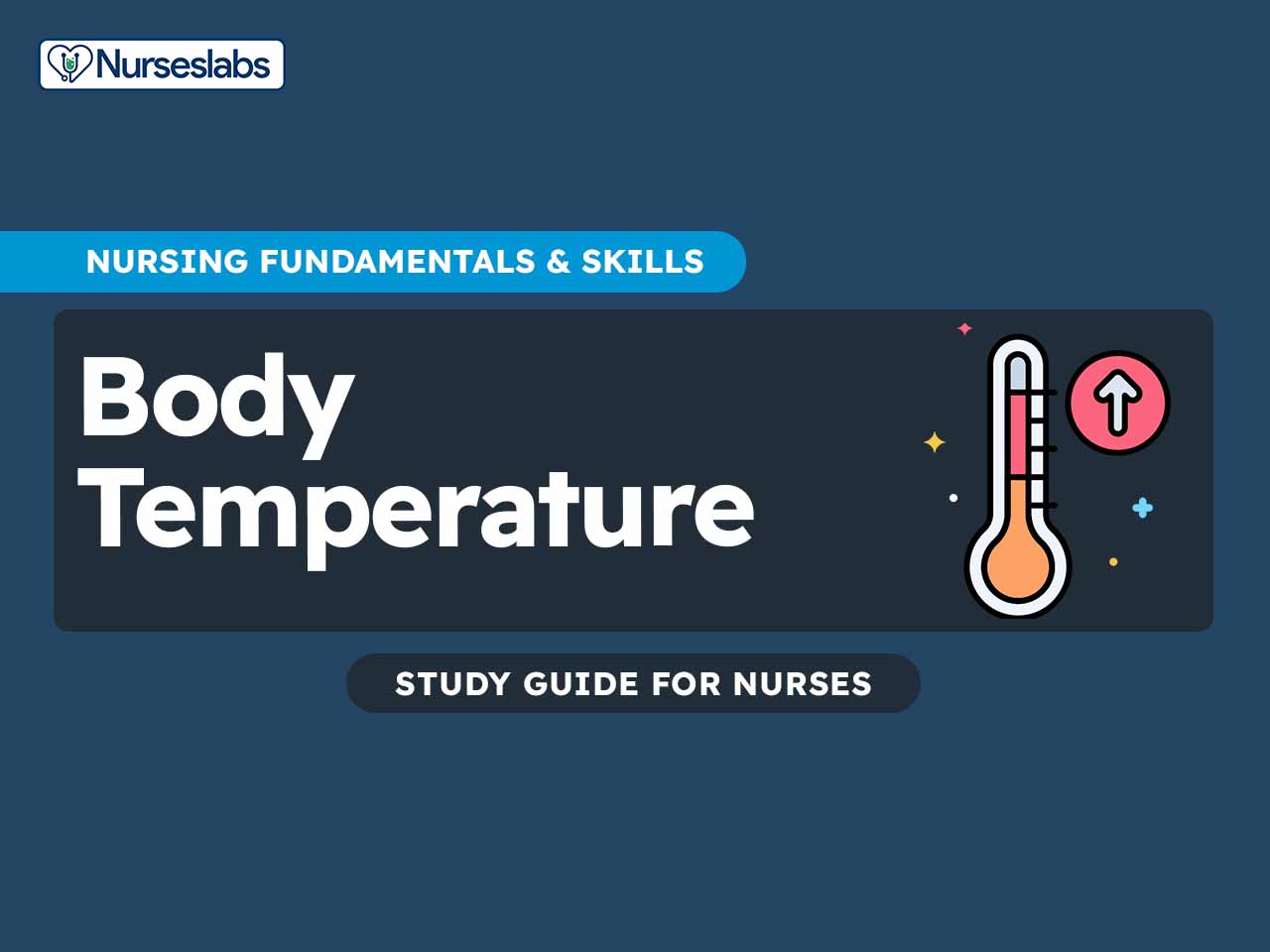





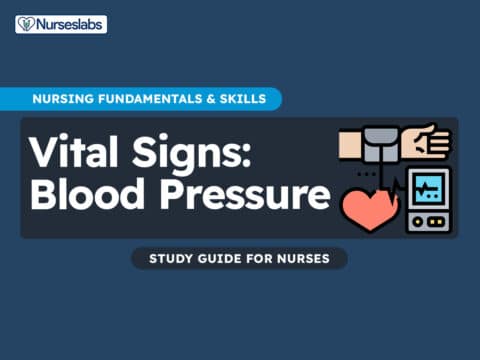

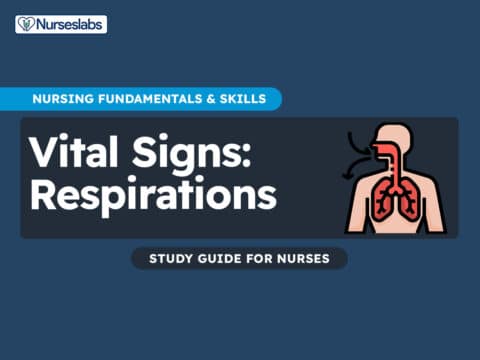


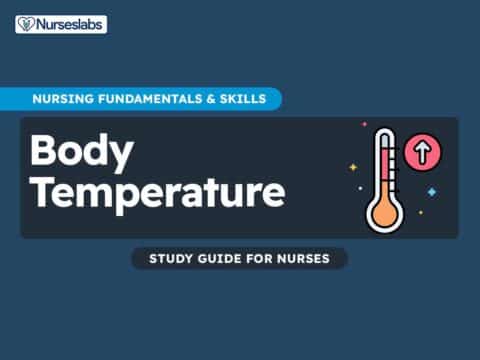









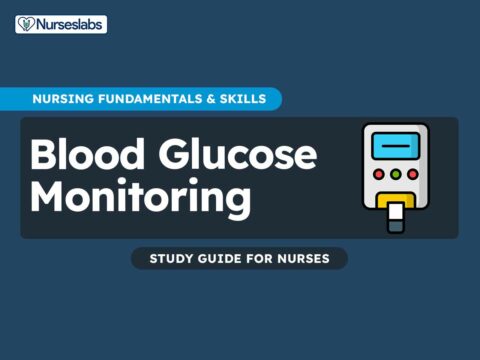



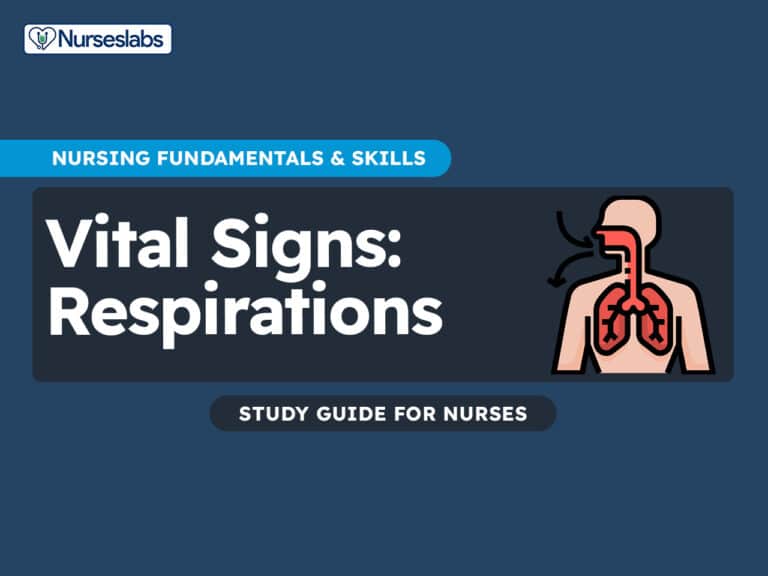








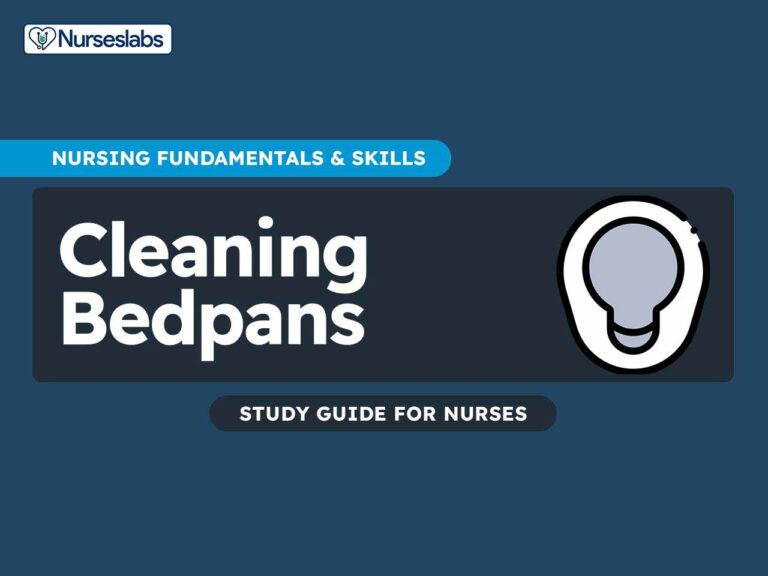


Leave a Comment